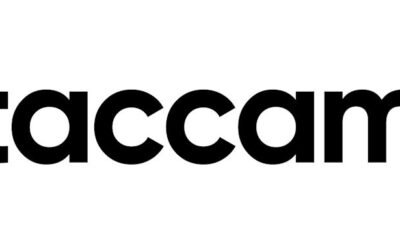LONDON and MIAMI and NEW YORK, Sept. 16, 2025 (GLOBE NEWSWIRE) — Cyber A.I. Group, Inc. (“CyberAI” or the “Company”), an emerging growth Cybersecurity, Artificial Intelligence and IT services company engaged in the development of next-generation market disruptive AI-driven Cybersecurity technology, announced today the appointment of Alex Epshteyn as Chief Innovation Officer.

Mr. Epshteyn brings over 28 years of executive leadership and advanced technical expertise in AI, complex systems integration, real-time data visualization and large-scale infrastructure projects. In his new role, he will lead CyberAI’s innovation initiatives, overseeing product strategy, research and development and the continued evolution of CyberAI’s expanding patent portfolio including Sentinel 2.0—the Company’s patent-pending AI-powered Cybersecurity subscription platform.
Working in collaboration with Dr. Peter J. Morales, CyberAI’s Chief Technology Officer / Chief Operating Officer, Mr. Epshteyn will drive efforts to align advanced innovation with enterprise needs and global market expansion. His appointment underscores CyberAI’s commitment to industry leadership, product excellence and the delivery of intelligent Cybersecurity solutions tailored for middle-market companies worldwide.
“Alex is a world-class innovator with an extraordinary ability to design, architect and commercialize cutting-edge technologies,” said A.J. Cervantes, Jr., Executive Chairman at CyberAI. “His deep experience spanning AI and mission-critical infrastructure will play a pivotal role as CyberAI accelerates the launch of our CyberAI Sentinel 2.0 platform and we position the Company for rapid growth and scale.”
Mr. Epshteyn previously served as CEO and CTO of Zignage, a premier real-time data visualization and digital signage company powering clients such as the New York Stock Exchange, Mizuho Bank, BMO and Morgan Stanley. He also founded Ngaged Software, an AI-powered education technology startup whose platform, BriteClass, was deployed at Harvard, MIT, Brandeis and NYU, among other colleges and universities. Earlier in his career, he held senior roles at Hewlett Packard Consulting, SIAC, Arup Consulting and Adler Group, contributing to initiatives that spanned trading systems for the NYSE, national emergency response infrastructure and major transportation hubs including JFK and Penn Station.
“Cyber A.I. Group represents the future of intelligent Cybersecurity and I am honored to join its exceptional leadership team at such a transformative time,” said Mr. Epshteyn. “The opportunity to pioneer AI-driven innovation while delivering secure, scalable and adaptive solutions through CyberAI Sentinel 2.0 is one I greatly look forward to. Together, we can help enterprises navigate an increasingly complex digital threat landscape with confidence and resilience.”
Mr. Epshteyn holds a B.A. with honors in Cognitive Science and Computational Linguistics from Columbia University and completed graduate work at NYU’s Media Lab at the Tandon School of Engineering. He has developed custom software and data analysis tools, while also volunteering at NYU Tandon to mentor undergraduate engineering students. Through his appointment as Chief Innovation Officer, CyberAI strengthens its commitment to delivering next-generation, AI-powered Cybersecurity solutions to a global marketplace.
About Cyber A.I. Group, Inc.
Cyber A.I. Group, Inc. (“CyberAI”) is a next-generation technology company pioneering the development of advanced proprietary platforms at the intersection of Artificial Intelligence and Cybersecurity. With a mission to redefine how organizations protect, predict and respond to digital threats, CyberAI is positioning patent pending technologies that enable autonomous threat detection, adaptive risk mitigation and intelligent system resilience across enterprise and cloud environments as a low-cost alternative for small and medium-sized businesses. At the core of CyberAI’s innovation is a team of world-class technologists, data scientists and Cybersecurity experts dedicated to creating breakthrough solutions that are scalable, secure and globally deployable. The Company’s technologies are designed to address the most urgent and complex challenges facing today’s digital infrastructure, from AI-driven security orchestration to autonomous anomaly detection and predictive analytics for critical systems. CyberAI’s commitment to continuous innovation and deep IP development is positioning it at the critical intersection of AI and the global Cybersecurity landscape. By fusing Artificial Intelligence with real-world cyber defense expertise, the Company aims to set new standards for intelligent infrastructure protection and digital trust. For more information, please visit: cyberaigroup.io
Forward-Looking Statements
This press release may contain “forward-looking statements,” including statements regarding growth plans, acquisitions, product commercialization, integration and prospective capital-markets activities. These statements are based on current expectations and involve risks and uncertainties that could cause actual results to differ materially. CyberAI undertakes no obligation to update forward-looking statements except as required by law.
Photos accompanying this announcement are available at:
https://www.globenewswire.com/NewsRoom/AttachmentNg/a99f3b57-3a68-49cf-93ef-b0e93cd27a88
https://www.globenewswire.com/NewsRoom/AttachmentNg/4b6183db-fbec-4b13-ac7d-11d923425d26





































